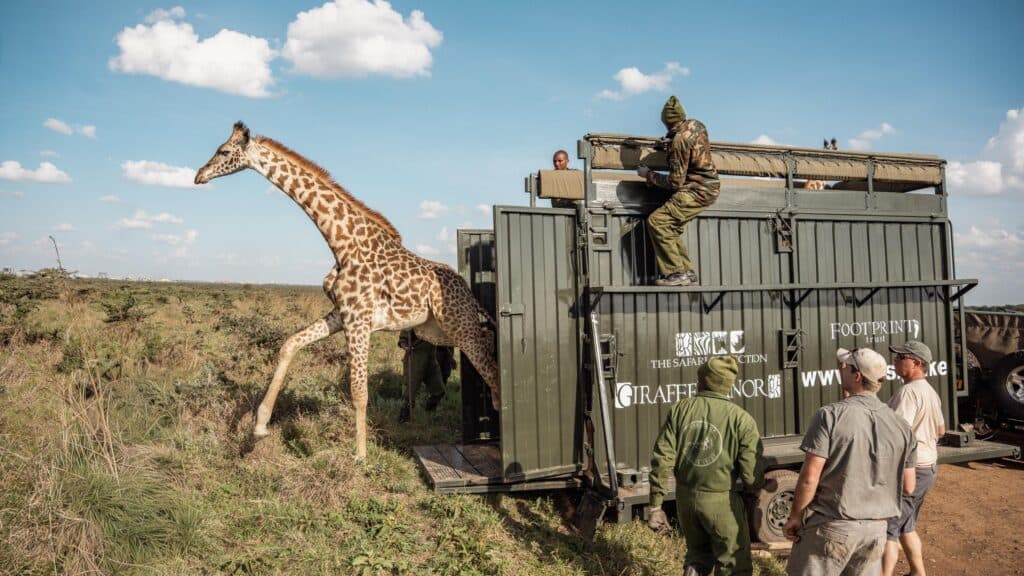We're loading the full news article for you. This includes the article content, images, author information, and related articles.
The translocation of hundreds of animals from Kedong Ranch highlights a critical conflict between development and conservation in Kenya, forcing a last-ditch effort to save populations now cut off from ancestral migration routes.

NAIVASHA, KENYA – The Kenya Wildlife Service (KWS) has intensified a large-scale wildlife translocation exercise from the privately-owned Kedong Ranch in Naivasha, a critical dispersal area for animals moving between Mt. Longonot and Hell's Gate National Parks. The operation, which continued this week, Tuesday, 11 November 2025 (EAT), aims to relocate over 1,000 animals, including giraffes, zebras, elands, wildebeests, and various gazelle species, to Nairobi National Park and other protected conservancies.
This drastic measure, undertaken in partnership with conservation groups The Safari Collection and the Giraffe Conservation Foundation, has been necessitated by the rapid subdivision and fencing of the ranch land. Parcels as small as an eighth of an acre are being sold, leading to widespread construction of homes and infrastructure that block vital wildlife corridors, cutting animals off from water sources like Lake Naivasha and threatening them with starvation, genetic isolation, and increased human-wildlife conflict.
A rapid assessment by KWS on August 30, 2024, confirmed the gravity of the situation, revealing that while the ranch remains an important dispersal zone, extensive fencing had already rendered large sections inaccessible to wildlife. According to a KWS veterinary officer, Dr. Dominic Mijele, the translocation is essential to protect animals from poaching and the escalating risks associated with habitat loss. As of early November 2025, reports indicated that more than 200 zebras, 10 giraffes, 40 wildebeests, 20 elands, and 100 gazelles had already been moved in a phased approach expected to continue into 2026.
The crisis at Kedong is a microcosm of a larger national struggle between economic development, land rights, and conservation. The ranch itself has been the subject of a decades-long ownership dispute involving the local Maasai community, who claim it as their ancestral land. This historical grievance is compounded by the presence of significant national infrastructure projects, including geothermal power plants and the Naivasha Inland Container Depot, which have further fragmented the landscape. Geothermal exploration within the Hell's Gate-Longonot ecosystem, a key part of Kenya's Vision 2030 development plan, has been flagged by conservationists for constricting wildlife habitat and increasing environmental pressures.
In a significant development aimed at resolving these tensions, President William Ruto announced on Tuesday, May 6, 2025, that the government had purchased an additional 6,000 acres of Kedong Ranch to be allocated to the Maasai community. This brought the total allocation to 10,000 acres, with the President promising to fast-track the issuance of title deeds within a week of receiving the list of beneficiaries. While this move addresses a major historical grievance, the subdivision of this newly allocated land for settlement and agriculture is expected to permanently alter the landscape, making the wildlife translocation an irreversible necessity.
The translocation from Kedong Ranch serves as a stark illustration of the pressures facing Kenya's wildlife outside of formally protected parks. Over 65% of the country's wildlife lives on private and community lands, making the viability of corridors and dispersal areas essential for long-term ecological health. The loss of the Kedong corridor could have significant economic repercussions for the tourism sector, which relies on the health and visibility of iconic wildlife populations in the Naivasha basin.
This exercise tests the efficacy of translocation as a primary conservation tool. While KWS has established guidelines for such operations based on IUCN best practices, experts caution that it is often a last resort. The success of the move hinges on the ecological carrying capacity of the destination parks. The Nairobi National Park Management Plan (2020-2030) notes that its rhino population is already beyond the park's capacity, raising questions about the long-term sustainability of adding hundreds more herbivores.
The situation underscores the urgency of implementing the new KWS Strategic Plan (2024-2028), launched on September 30, 2024, by Director General Dr. Erustus Kanga. The plan emphasizes community participation and ensuring wildlife populations flourish. For corridors like Kedong, however, where development and land-use changes have reached a tipping point, such interventions may have come too late, turning a landscape of free-roaming wildlife into a mosaic of fenced-in islands. The challenge for Kenya's conservation bodies is to secure remaining corridors before they face the same fate, ensuring that translocation remains an emergency measure, not a standard operating procedure.
Keep the conversation in one place—threads here stay linked to the story and in the forums.
Other hot threads
E-sports and Gaming Community in Kenya
Active 7 months ago
Popular Recreational Activities Across Counties
Active 7 months ago
The Role of Technology in Modern Agriculture (AgriTech)
Active 7 months ago
Investing in Youth Sports Development Programs
Active 7 months ago